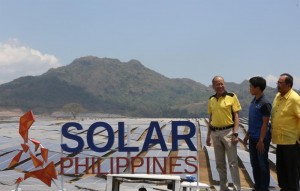
MALACANANG appealed to the public to participate in this year’s Earth Hour aimed at lessening human carbon footprint that impacts heavily on the environment.
The Earth Hour will be observed tonight (March 19), and it will be the Earth Hour’s 10th anniversary since it was initiated by the World Wide Fund for Nature or WWF.
“It will be from exactly 8:30 p.m.until 9:30 p.m.. So, sana po mag-cooperate tayong lahat at makisali dito,” Undersecretary Manuel Quezon III said in a radio interview on Saturday.
“This is to symbolize our commitment to lower our carbon footprint and to lower our use of energies so that we can have a sustainable future. The Philippines will be joining 117 nations around the globe to mark Earth Hour.”
Quezon also responded to the call of former US Vice President Al Gore who asked the government to stop its dependence on coal-fired power plants that pollutes the environment.
The Palace official said they appreciate the point of view of Gore noting that in fact, the government continues to widen the country’s renewable sources of energy.
For instance, Quezon said the President joined the inauguration of a solar-powered plant in Calatagan, Batangas this week.
The country also has a very healthy energy mix, about 70 percent of Philippine energy is produced by sustainable or low-polluting sources including geothermal and hydropower, Quezon stressed, adding that the country’s renewable energy sector such as wind and solar continues to expand.
But he acknowledged that the Philippines is facing an energy dilemma that is not comparable to most developed nations like the US.
“Our dilemma is mataas pa rin ang presyo ng enerhiya at may mga lugar kung saan hindi pa sapat ang supply ng kuryente at ang mahalaga dito ang konsepto ng baseload,” he noted.
Baseload is the energy produced by the power plants during peak hours or all the time.
“In other words, you cannot have let’s say solar power na useful siya habang may araw kaya lang pag gabi hindi mo na magagamit unless you set up large battery farms which we do not have,” he explained.
This means that in order for the country to develop, the government must produce sufficient and cheap electricity that will power factories, offices and households, he said.
“So, we would have to invest — as we are investing, the private sector is putting up mga coal-fired plants but let’s point out na ‘yung mga planta na ito ay mas malinis kumpara let’s say about 10 years ago kasi nagkakaroon ng technology,” according to Quezon.
“Everyone of course will be keeping in mind.., ang pananaw na dapat talaga papalawakin natin ang malinis na enerhiya but kailangan din nating ibalanse ito sa development ng Pilipinas.” (PND)







